Skip to content

I was considering what my first October post should be this year . . . a ghost story, a fascinating “story behind the stones” of old cemeteries, a thrilling story from Texas history, or a historic site. Why not all of the above? If you travel to Coryell County, it’s all in one place.
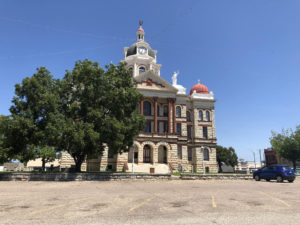
Workers at the Coryell County Courthouse in Gatesville have felt an ‘other-worldly’ presence for years: cold breezes through the county clerk’s office, an occasional firm tap on the shoulder and even furniture being re-arranged in the middle of the night. Locals have dubbed the courtly ghost ‘Elroy’ because they aren’t certain who it actually is. But there are theories that the spirit can’t leave the courthouse because of a connection to a sensational 1909 murder right in the courtroom.
It happened over 100 years ago.
In 1908 a 19-year-old young woman named Verna Mabel Ware was assaulted by a 20-year-old-man named John J. Hanes in the Gatesville area. It was alleged that Hanes – reportedly studying pharmacy – drugged chocolates he gave to the girl at a spring picnic and then took advantage of her, resulting in the birth of a child.
He was charged with seduction, as the word ‘rape’ wasn’t used at the time because it was thought to be too harsh.
Hanes reportedly had several male friends lie on the witness stand during his trail.
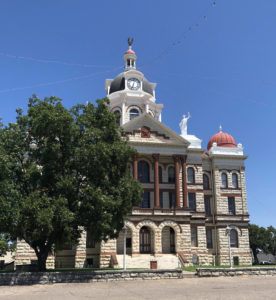 It’s apparent that the behavior wasn’t unusual at the time, because before his own trial proceedings were finished he sat in the courtroom on February 2, 1909 watching another man named Wiley Mulhouse who was being prosecuted on the same charge. Because the jail was in the basement then, Hanes would have been returning to his cell at the end of the day. The two trials had split the town into separate contentious sides.
It’s apparent that the behavior wasn’t unusual at the time, because before his own trial proceedings were finished he sat in the courtroom on February 2, 1909 watching another man named Wiley Mulhouse who was being prosecuted on the same charge. Because the jail was in the basement then, Hanes would have been returning to his cell at the end of the day. The two trials had split the town into separate contentious sides.
Both Ware and Hanes came from respected farming families in the area and had many friends.
Verna, distraught with her situation, stood in the rotunda with her brother Ezra looking through the plate glass window that separated them from the courtroom. Fearing she would never see justice, she decided to take action herself.
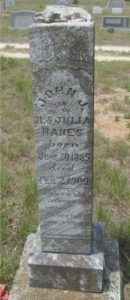 She pulled a 38 caliber revolver from her purse and shot through the glass, hitting Hanes three times in the back. He died instantly. As people in the courtroom scattered, Ware continued to fire hitting James J. Smith (age 68) in the head, Dave Ross (age 48) in the arm and back and A. P. Wiley, Jr. in the leg. Only Wiley would survive his wounds.
She pulled a 38 caliber revolver from her purse and shot through the glass, hitting Hanes three times in the back. He died instantly. As people in the courtroom scattered, Ware continued to fire hitting James J. Smith (age 68) in the head, Dave Ross (age 48) in the arm and back and A. P. Wiley, Jr. in the leg. Only Wiley would survive his wounds.
Initial newspaper accounts reported that the three other wounded men were merely spectators in the courtroom, but local lore hints that they may have been character witnesses for Hanes.
Judge Arnold maintained composure during the incident and directed officials to take Ware downstairs to the jail. Physicians who visited her in her cell declared that she was in a “critical condition of nervous collapse.”
After a few days in jail formal charges were made of three counts of murder and one for carrying a pistol. Her bond was set at $7,500, and was paid by citizens of the community who sympathized with Ware and her situation.
The trail began late in 1909 and continued until February when she was declared not guilty due to temporary insanity. Reporters wrote that at times during the proceedings the jury and spectators were moved to tears. She did have to pay a fine for having the gun, however.
 So who is the courthouse ghost? Perhaps it is Hanes who was positive he would get away with his transgression, and now is trapped in the courthouse. Perhaps it’s the spirit of someone else. We may not ever know for sure.
So who is the courthouse ghost? Perhaps it is Hanes who was positive he would get away with his transgression, and now is trapped in the courthouse. Perhaps it’s the spirit of someone else. We may not ever know for sure.
But if you visit the Coryell courthouse, be prepared to feel an unseasonable chill in the air.
Now, I’m curious…are you more likely to visit the courthouse because of it’s beauty, or because of its ghost?
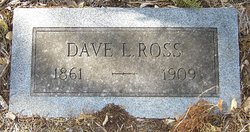
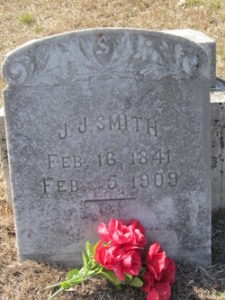
Incidentally….
-
The jury for the Mulhouse case returned a few days later and returned a guilty verdict with a sentence of two years.
-
The three shooting victims are buried in area cemeteries, with nothing on their markers to denote their newsworthy demises.
-
In the 1990s a local artist even depicted the courthouse in an oil painting with a shadowy figure peering out of a second floor window over Main Street.
-
The year after her trial, Verna Ware married W.R. Eck who adopted her daughter Opal. He unfortunately passed away in 1918.
-
Ware remarried, but it didn’t last. She and Opal moved to Utah were Verna passed away in a rest home in 1973.
-
And the courthouse? It’s well worth visiting with or without the ghost in attendance. The Beaux Arts beauty was built in 1897-1898 of red and white sandstone from a design of architect Wesley Clark Dodson.

 It’s apparent that the behavior wasn’t unusual at the time, because before his own trial proceedings were finished he sat in the courtroom on February 2, 1909 watching another man named Wiley Mulhouse who was being prosecuted on the same charge. Because the jail was in the basement then, Hanes would have been returning to his cell at the end of the day. The two trials had split the town into separate contentious sides.
It’s apparent that the behavior wasn’t unusual at the time, because before his own trial proceedings were finished he sat in the courtroom on February 2, 1909 watching another man named Wiley Mulhouse who was being prosecuted on the same charge. Because the jail was in the basement then, Hanes would have been returning to his cell at the end of the day. The two trials had split the town into separate contentious sides. She pulled a 38 caliber revolver from her purse and shot through the glass, hitting Hanes three times in the back. He died instantly. As people in the courtroom scattered, Ware continued to fire hitting James J. Smith (age 68) in the head, Dave Ross (age 48) in the arm and back and A. P. Wiley, Jr. in the leg. Only Wiley would survive his wounds.
She pulled a 38 caliber revolver from her purse and shot through the glass, hitting Hanes three times in the back. He died instantly. As people in the courtroom scattered, Ware continued to fire hitting James J. Smith (age 68) in the head, Dave Ross (age 48) in the arm and back and A. P. Wiley, Jr. in the leg. Only Wiley would survive his wounds. So who is the courthouse ghost? Perhaps it is Hanes who was positive he would get away with his transgression, and now is trapped in the courthouse. Perhaps it’s the spirit of someone else. We may not ever know for sure.
So who is the courthouse ghost? Perhaps it is Hanes who was positive he would get away with his transgression, and now is trapped in the courthouse. Perhaps it’s the spirit of someone else. We may not ever know for sure.




